Well, today is kind of mucky, but the two days before that were sunny and bright and warm and it’s weird to picture that just a few weeks ago, the local weather looked this:

Snow is not unheard of around here, though it can be quite uncommon. But maybe you are researching how uncommon, or how often it rains, or what the average daily temperature around here might have been in the mid-20th century. How do you do that? Well, there are a number of ways, some of which have close ties to UAH, and I figured I’d share a few of these with you.
Let’s start with the resource most local to us. You have The Alabama Climatologist, which is a kept by State Climatologist and UAH Professor, Dr. John Christy. It has links to lots of other data and keeps up regular reports on climate data. For instance, right now in the link list you have such reference sources as Climate Normals and Extremes for 1971-2000 at 141 Alabama stations (which is a pdf). It also links to several of the standard resources that I’m about to discuss more in a bit.
Keeping local, the NSSTC has an extensive collection of local climate data. Using that, you can click on, say, the monthly data only tab, and then select Huntsville [or another city from Alabama from a drop-down box], and then look at Huntsville’s data back in 1975, which looks like this (after clicking the “more” arrow):
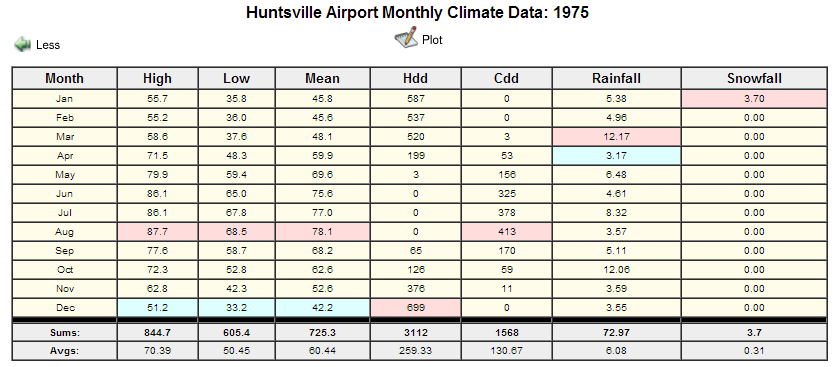
The mother of all weather data sites, at least for the US, would be the National Climatic Data Center. From there, you can view monthly climate reports, local data, and other datasets. You have to “order” the data in some cases, but is free. You just have to make your selection of the data you want and then wait for the email. Returning to the Huntsville example, here is a 1995 screen from their Huntsville Airport Substation dataset (you’ll probably have to click on it to see a larger version to actually read it):
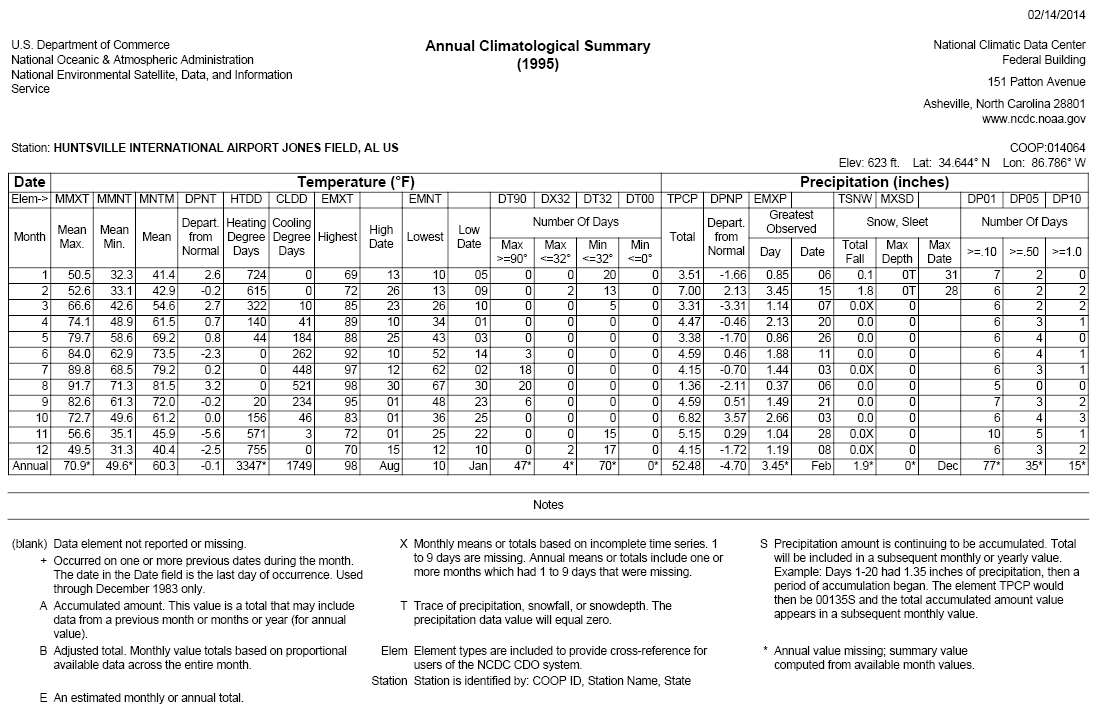
There is also the old standby of Weather.gov. While it is my (and probably should be your) go-to source for forecasts and weather alerts, you can also often see weather station data for a region if you click on the city name after searching. For instance, after searching for Huntsville, AL, I get the current conditions, and then a link to see Huntsville’s local forecast office (here’s a quick diagram explaining, also showing the current conditions as I write this post!):
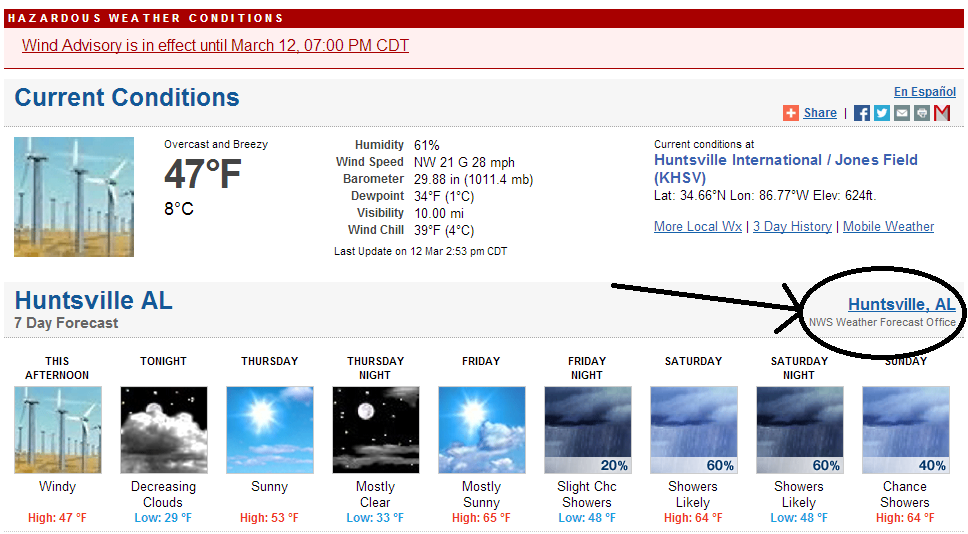
This takes you to http://www.srh.noaa.gov/hun/, which gives lots of data about the current condition, the weather stations, some information useful to the local area, and the history of the stations. Other cities have similar pages, so give that a try.
One of the most interesting sites is the CoCoRaHS – Community Collaborative Rain, Hail, and Snow Network. What it does is take personal observations about the current conditions, include such things as the shape of flakes or size of hail, and collects them. For instance, if you want to see some data from the mid-February storms that inspired this post, you can do a search on the Daily Comments page, and see records like this, useful if you want specific contexts to conditions going on over a wide area:
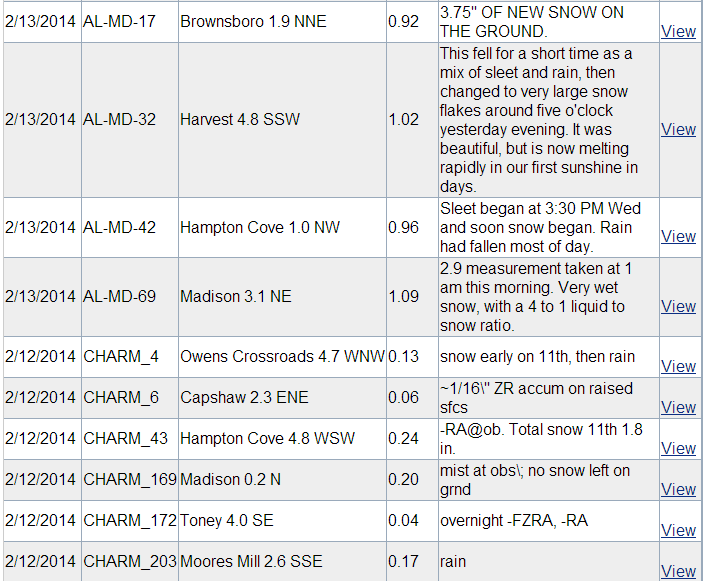
So how about that original question? The snow around Huntsville. Well, looking through all the various bits, I was noticing it was not exactly easy to find a good table of data about just snow [I was finding plenty about general precipitation] so I contacted Dr. John Christy, the State Climatologist mentioned above, and he graciously shared this PDF of North Alabama Seasonal Snowfall.
And what does it show? Well, take a look for yourself. This post is about the fun of finding data, what you do with it is up to you.
Of course, don’t forget our resources like ScienceDirect, Proquest: Science and Technology, and OneSearch. If you need help with any or all of these resources, feel free to contact us at the reference desk.
Before you go, though, why not look at a couple of more awesome snow pics. They are quite pretty.
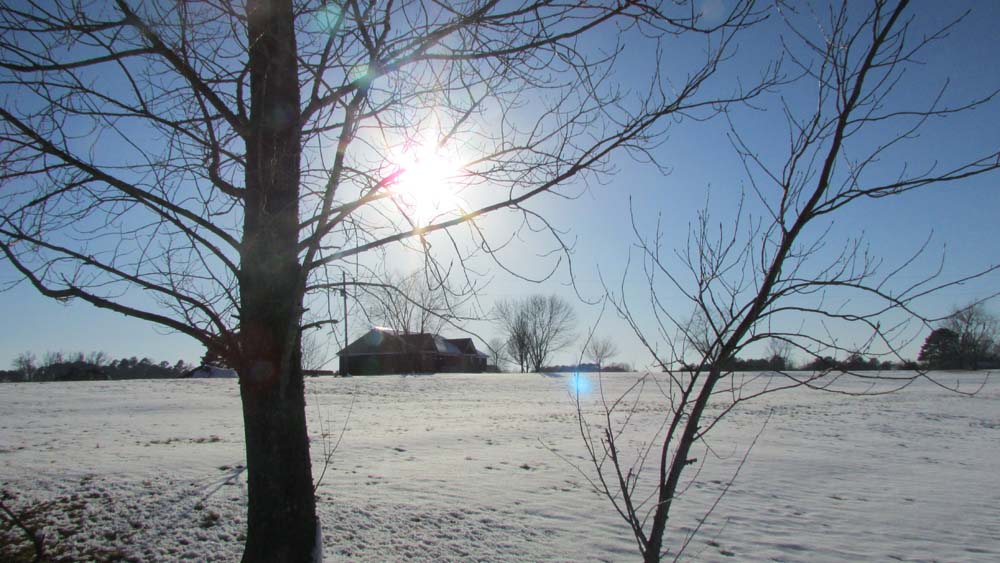

Engaging Reference aims to be a series of posts about the ways you can look up types of data, information, research, files, and so forth. If you have a type of data or information you would like us to go into more depth with, you can email me at doug.bolden@uah.edu and I’ll see what I can do.
All the images in this post are copyright 2013, Heather Floyd.









